A Quilty Adventure Part III: How to Sew with Wool
You guys, if you live anywhere close to where I live (Chicago), you know that it’s cold out there. We need to go somewhere warm. No, I’m not talking about Waikiki (although I’m def willing to consider it). I’m talking about wool.
Over here in the cold white north, we could use a lot more wool in our lives. But sewing with wool isn’t all warm fuzzies. If you want to get the most out of this trip, you need a quilty travel advisor. And guess who's ready to volunteer?! (I'm vigorously nodding my head and pointing to myself.)
Buckle your seatbelt, and grab some snacks for the road. It’s wool time.
(if you're drooling over the stacks of wool in the photo above, I got you covered. Click here to buy.)
Read More From Our Quilty Adventures!
WELCOME TO WOOL
Your shivers stop here.
Trending patterns!
How to Sew with Wool: The History
Wool might be one of the most historical, well-established stops we’re going to have on our quilty adventure. We’re talking about some BC action here. Wool textiles were found in Europe dating back to 1500 BC, and were likely used much earlier in the middle east. You guys, that was before shears were invented. That means people were hand-plucking and hand-spinning wool for clothing. That’s a lot of work!
The dying and finishing of wool came much later, but really upped the value of woven wool, making it more stylish, and less itchy. Nowadays, we use a lot of synthetic fibers, so the demand for ALL THE WOOL has waned a bit in the modern age, but that doesn’t mean wool doesn’t deserve our attention. Sewing and quilting with wool is a timeless practice that isn’t going anywhere. And neither are we. Let’s take a closer look at what wool has to offer.
Special Attractions
Remember how I mentioned before that we’ve gotten really into synthetic fibers lately? Well. One reason I’m personally drawn to wool is because of how natural it is. Wool was around before we even knew what to do with it. And the fact that it’s natural means it has some amazing natural attributes.
Get this: wool is naturally mold, mildew, wrinkle, and flame resistant.
Whaaat? I know. Crazy cool. It’s also, as you know, super warm, and super durable. Wool is one of the only fabrics that boasts as close to a lifetime warranty as you can get. There are a lot of wool blends out there that still give you the warmth and durability of wool, but have a slightly different look or feel.
Wool, how are you so cool? I mean you had me at “warm and dry,” but all these amenities have me anxious to get going. Time to pack.

How to Sew with Wool: What to Pack
I’m going to come right out and say it: wool can be a beast. But that’s no problem. Because you can be a beast, too. We’re going to pack our strongest, brawniest sewing tools on this trip. Wool, you ain’t got nothin’ on us.
- High quality thread. This is a big one when working with wool. Hi-qual polyester and cotton might be able to do the job, but you may want to try silk thread when doing a wool project, to make sure you’re matching the strength of your material. If you’re finding that your thread is snapping often, time to up your game (cuz you know wool’s not going to be the one to back down.).
- A strong needle. you’re probably want to go with needles between 90/14 or 100/16. (This article is a great resource if you are new to sewing and the different needle sizes available.)
- Pinking shears. Since wool is bulky already, you want to avoid adding more bulkiness to your seams. Pinking shears can help you out here.
- Wool press cloth. Ironing wool gets really tricky. If you use a hot iron, you could damage your fabric by leaving totally unflattering shiny marks on the surface. Not cute. If you want to press the right side of wool, prevent the chance of shine and scorch by putting a press cloth over the fabric. Your future self will thank you.
The Itinerary
Your bag is packed, your muscles are flexed, and you’re ready to hit the road. Here’s what’s in store:
First Stop: Pre-shrinking
Wash wool in warm water on a wool cycle if your machine has it. It’s important not to use regular detergent as the enzymes are bad for the natural fibers. Instead, use detergent specially made for wool or even a mild silicone and sodium laurel sulfate hair shampoo.
- If you look on the tags of any of your woolen garments, you may see those two dreaded words: Dryclean Only (or, if you translate into Suzy Speech: you’re never washing this thing. Keep it clean.) There are some washable wool blends, so you may not need to worry about this. However, if you want to play it safe and assume the wool you just purchased should not be washed, steam it like there’s no tomorrow. Don’t feel like steaming for days? Check your info at the fabric store, and look for the pre-shrunk inscription. This article has more details on washing and steaming wool.
- BATTING: If you jump fully on the wool train, there is A-mazing wool batting out there. A quilt made with wool batting will be extra warm and toasty. My preference is the brand Quilter's Dream. The wool used in that batting is already pre-washed, so you don't need to do it yourself or worry about shrinkage.
Second Stop: Cutting
- Now comes the fun part. Cutting is sometimes the most dreaded step, but guess what? Wool makes it sooo easy. Wool doesn’t stretch, and cuts with clean edges (no unraveling! YES!) So why do I even mention this step? Because I want you to enjoy it. This is the sunny, sandy beach stop on our adventure in Woolland.
Last Stop: Sewing
- Because of wool’s heftiness (no, wool, we’re not calling you fat), you could use a walking foot if you have one. Either way, try a longer stitch length, like 2.5 - 3mm. Take your time here, and let your machine really put some muscle behind its work. Just remember: you got this. And your future is going to be so, so warm.
- Once you have finished sewing, press the seam open – this will alleviate bulk. Also, let the wool cool complete down before shifting it again.
Famous Locals
Patchwork Wool Quilt and Pillow, Very Berry Handmade


Look at those gooooorgeous seams! Doesn't this pillow make you want to highjack your old English Lit professor and shred his tweed blazer up for a quilt?? I didn't take English Lit in college...instead I opted for Creative Writing 101 and let me tell you, exactly ZERO of them wore blazers. Definitely more of a ripped band T-shirt and jeans kinda group.
I found some machine washable wool here. BUT notice that it is only 50% wool. Tricky...very tricky.
Alabama Quilt, Folk Fibers

This stunner uses a mix of recycled dress wool and cotton. With the cost of wool being...not cheap, recycling wool from old dresses, coats and pants is a great way to get what you need. You could try your local second hand shop (be sure to read the tags) or Ebay might have some old-man pants that you can get for a good price.
The quilt above is machine pieced and fully hand quilted. Don't you want to rub your hands all over it? I bet it's super snuggly and warm.....mmmmmm.
Framed Quilt [pattern], Maker Unknown (circa 1825)

ummmm....most badass quilt from the early 1820s??? NAY The ENTIRE 1800s! You may not be on the same page as me with this quilt, but to me – it is perfection. Let me convince you...
This beaut was labeled as a "utilitarian and thrifty" quilt on the archival website where I found it. Making quilts from repurposed sacks and clothes was typical of this time, but this quilt is still very special. It pulls from the medallion style of quilts, but plays with asymmetry in a way that is incredibly innovative for the early 19th century.
Let me paint a quick picture of what the "art scene" looked like in the early 1800s. Inspiration was being drawn from the classics – lots of florals, lots of cherubs, and LOTS of symmetry. Just Google Neoclassicism and you'll see what I mean. OK OK, I'll do it for you 😉 And have you heard of a little lady named Queen Victoria? She was pretty en vogue (except, I better spell it the British way cause Vickie had a veritably tense relationship with the French.). Correction: in vogue.
You get the picture. So imagine yourself, a quilter, shredding up grandpa's old pants and living in a time when lace doilies were the pinnacle of creativity.
Kind of a bummer, right? I don't know if this "utilitarian blanket" was oooooed and aaaaaahed over back then like I'm doing right now, but I do know that 200 years later it has made its way onto the internet and is inspiring me (and now you) to explore color, pattern, shape and composition in a way that is relevant TODAY. A-MAZING! Simply amazing.
Before You Check Out
Before you check out, you should know that wool has a mortal enemy. Err… maybe I should have told you this first? Welp, better late than never. Moths have it out for wool. They dedicate their fragile little lives to chewing holes and even laying eggs in wool.
Remember that nostalgic smell of moth balls that used to smack you in the face every time you went into grandma’s attic? Well, she knew what she was doing. But if you’re not a fan of the smell, store your wools in a ziplock or airlock bag. Better yet? Use them all the time. Using wool is the best way to deter moth infestations!
I don’t know about you, but I’m feeling warmer already. Send some more warm fuzzies this way by leaving a comment down below!
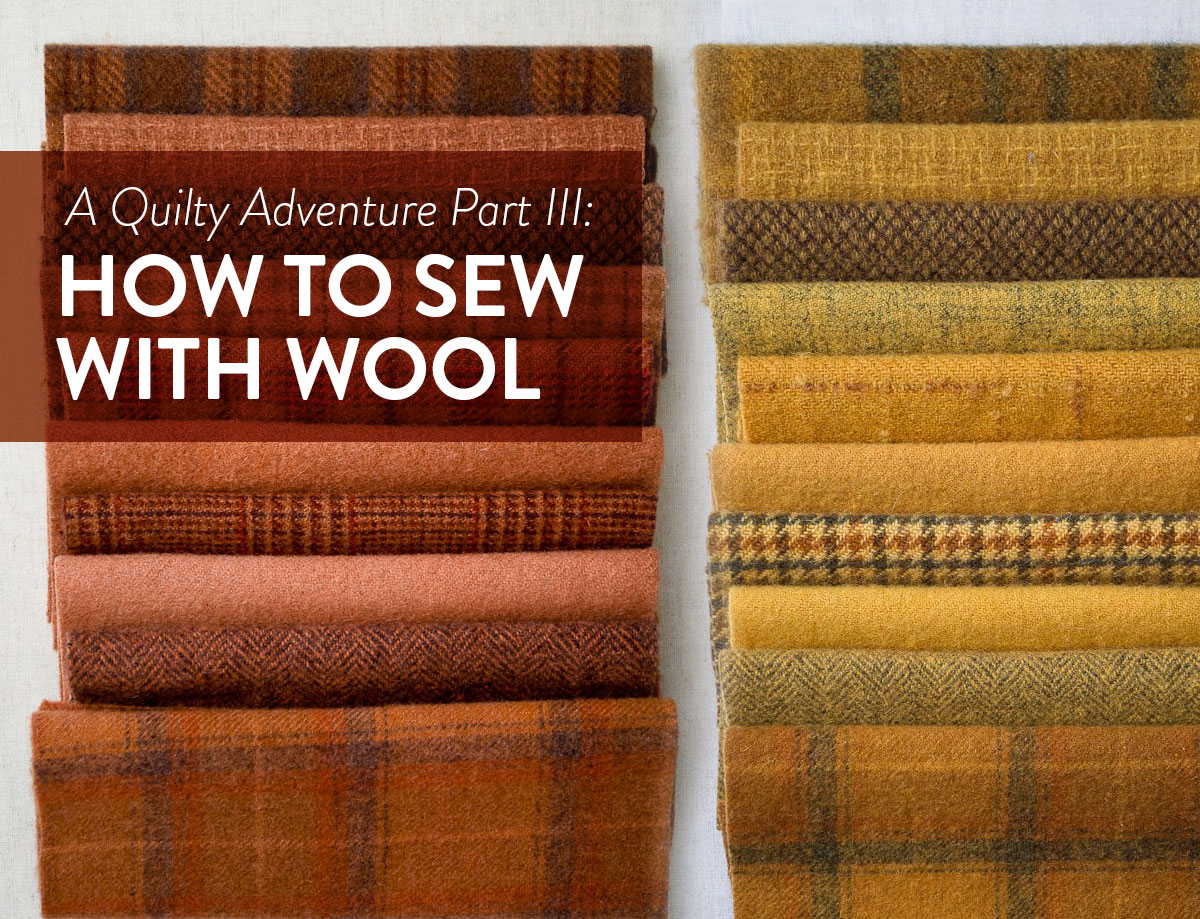
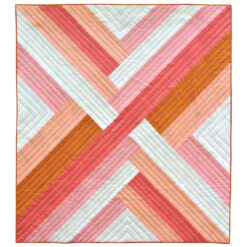
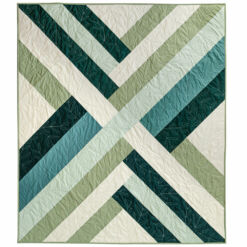
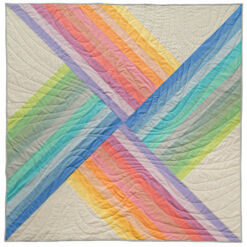
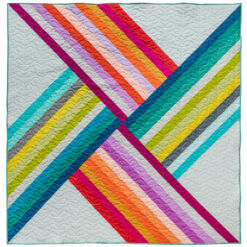
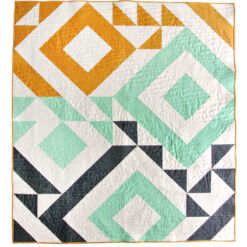
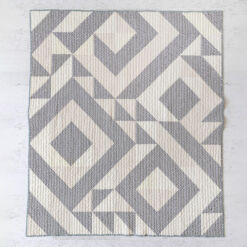
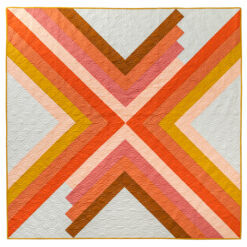
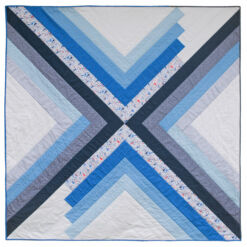
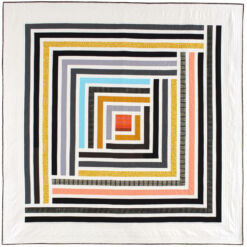
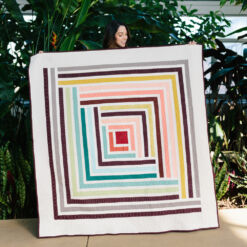
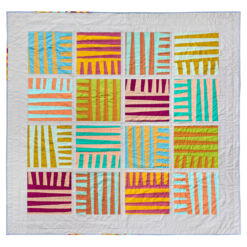
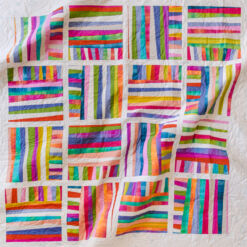
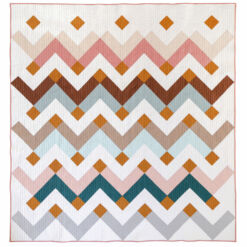
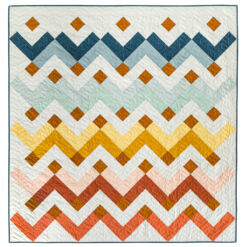
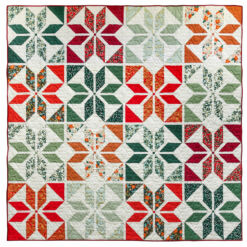
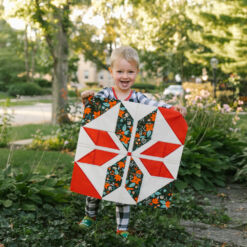
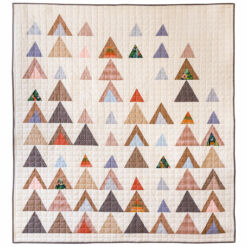
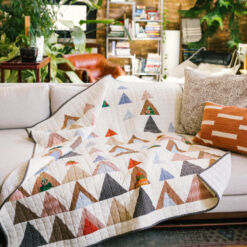
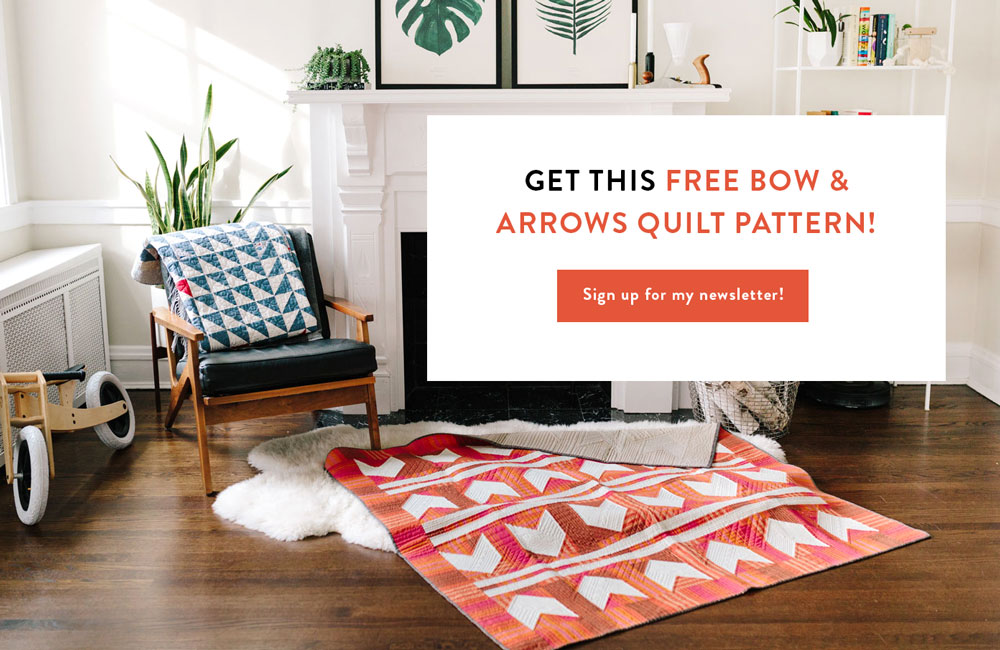
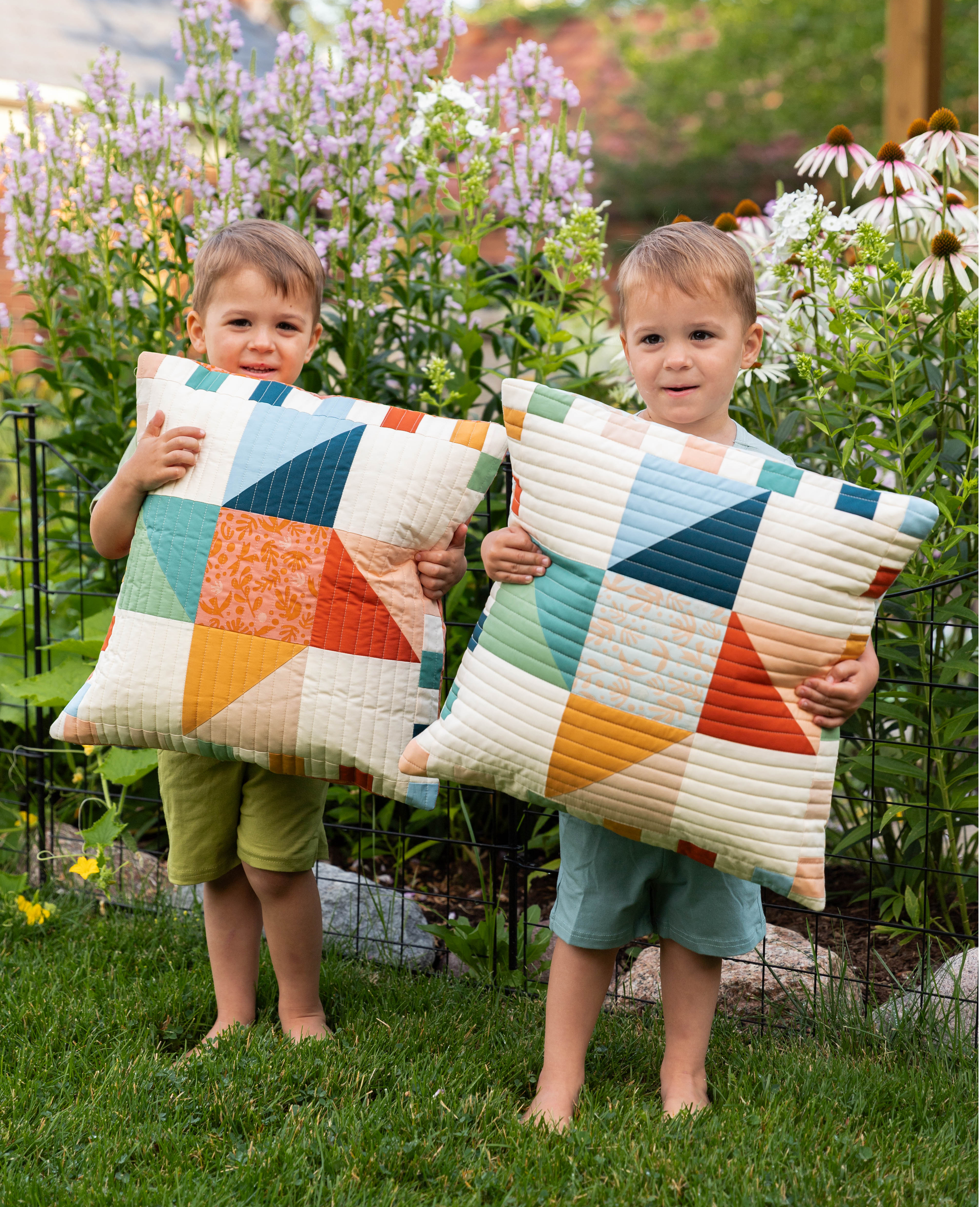

One way to take care of moths and their eggs is to freeze them. Freeze for a week or so. Take the item out. Then freeze again to make sure any eggs are killed.
Good to know! Thanks so much, Susan 🙂
This works well for yarn, too. I know there are sock knitters among our quilters. The first quilt I made (1986) was wool. I need to make another one! Thank you, Suzy.
That post was inspiring, educational, and so darn fun to read. Thank you very very much!
I’m so glad to hear it! Thanks, Dana 🙂
So much great information! Thanks so much.
Its 530am! I just read our trip itenary & have my wool ready to wash! Bon voyage! Thanks for the inspiration!
Great article! Tempting project for sure!
Oh, wool, I love you! Thanks for such a delightful article about such a marvelous material. Decades ago, all my most favorite clothes were made of wool–some that I made, some that I bought. Thanks for the reminder to not ignore good old wool 🙂 And thank you for all your recent holiday posts with so many great ideas. Now–go enjoy your Christmas!
Thanks so much, Karen! I’m going to take a nice loooong Christmas holiday…but not quite yet 😉 xoxo
Being a lover of wool I have a few thoughts,
1. Sheep get wet, wool gets wet, there is usually no reason to be afraid of washing wool fabric – especially if it’s 100% wool. If you don’t know if a fiber is all wool you can put a piece of it in bleach, if the fabric completely disappears, congrats, it’s all wool. You can also burn test it – if it ignites and keeps burning or burns for a little while and then leaves a black ball of char, it’s not all wool.
2. The more friction and soap you add to the wash, the more the fabric will felt – so it is best to hand wash if you don’t want it to shrink a lot. But as you said, steaming the fabric a ton is a perfectly acceptable way of pre-shrinking.
3. Finger pressing is a must! After you steam a seam, go back in with you fingers and press that seam down into oblivion – you’ll know you are true lovers when it no longer burns your fingers.
4. If you are working with a lightweight (like a gaberdine) or tropical weight wool do a press test first. Often these lighter weight wools can leave seam marks when you iron them, and these marks can be almost impossible to get rid of. To avoid these marks, put a piece of paper between the seam allowance and the fabric and iron from the back – then finger press right along the seam.
5. If you develop a full on affair with wool, get a wooden clapper to help with the ironing. https://smile.amazon.com/Golden-Hand-Ind-0858-Tailors/dp/B003KVMP4A/ref=sr_1_3?ie=UTF8&qid=1483640208&sr=8-3&keywords=wooden+clapper
6. The heavier a wool and the more texture it has, the more forgiving it will be when you sew with it. Don’t start with a wool boucle, it will unravel worse than anything … anything.
7. The best thing about wool is how it responds to heat, (almost) any ripple or pucker can be ironed away in wool if you apply enough heat, steam and finger pressing.
8. Denver Fabrics has pretty decent prices on wool, and quite the selection.
You’re amazing and do you want a job writing for me??? 🙂
Super helpful comment. Thank you!
This is amazing! I feel braver with my fabrics already! Any tips for using wool batting (like the Quilters Dream wool batting, which is super duper preshrunk)? It seems like this should work just like cotton since there’s no shrinkage to worry about, but if you do have any tricks up your quilty sleeve I’d be thrilled to hear them.
From what I’ve heard and read, you can treat it the same as their cotton batting. Be prepared for extra snuggly warmness! 🙂
That’s awesome! Thank you!
I like your series of “How to sew with. . .” I am wondering if you have any experience with the silky tricot fabric. My grandma hand quilted me a little blanket when I was a baby and I still have it, 23 years later. I treasure that blanket, and always will. My sister-in-law just announced that she is expecting a baby and I would love to make the sweet girl a baby blanket the same way but I’ve never worked with that kind of fabric before, and don’t even know where to find it. Any tips?
I’m not familiar with that kind of fabric, however, I have made quite a few simple baby blankets using minky. Here’s a tutorial if you are interested in that – https://suzyquilts.com/how-to-make-a-minky-baby-blanket/
I am looking for white or cream 100% wool by the yard. I plan to dye it for a project.
This article was very useful! Thank you! I’ve made a wool quilt top out of a bunch of pendleton skirts I thrifted and cut apart. I’m curious as to what I should use as the backing? Should it be wool or can it be cotton?
Thank you!
That’s a great question and I think cotton would be a good choice, unless you want it to be a very heavy and super-duper warm quilt.
Thank you Suzy!
I am doing exactly the same thing. I intend to buy lightweight wool gabardine for the backing.
How do you intend to quilt your quilt? A friend has asked me to make a throw from Harris Tweed jackets. Once sewn together I’m at a loss as to how to quilt. I won’t hand quilt😁
I would do simple matchstick quilting or stitch in the ditch (quilting in the seams.)
This project is on my retirement bucket list! I’ve collected Pendleton shirts, pants and skirts for decades with this in mind. I would love to see a photo of yours and any tips you might have. Did you just stitch in the ditch for quilting or add anything more elaborate?
I want to make a tartan quilt, do you think it would be bad to mix wool and cotton on the same side because the difference in weight of the fabrics?
Thank you for the information!
hmmmm….bad? Never. Easy? Maybe not. But you know what? I think it will be awesome and you should totally go for it!
Wonderful article. I know it’s been awhile since you posted and I’m wondering what you do with seam allowance for quilting with wool. Do you stick with 1/4 inch or use something bigger?
For quilting you can still stick with that 1/4″ seam allowance, unless the wool is really thick and a 3/8″ or 1/2″ seam would lay flatter.
I spin, weave, and sew with wool. I use small blocks of cedar wood, put a drop of pennyroyal oil on them, and store wool in paper bags. Pennyroyal and cedar are natural bug repellents (I like the way they smell together.)
thank you suzyquilts for giving me wonderful information
HI, I have never quilted before but my neighbour gifted me a sewing machine and I have bought a bunch of wool fabric offcuts and sample pieces, some are fine suiting, much of it is 6 foot long, 5 inch wide strips of 100% lambswool tweed. I hope to make a patchwork hearth cushion for our dogs to sprawl in front of the log burner on. Can I ask for advice on filling my cushion – would you recommend old duvets or would washed fleece work (I have a couple of rug quality fleeces that I could use). Should I put a cotton backing on the wool patchwork before filling it? Sorry if they are silly questions but I am new to all of this. Love reading your how to’s – they have given me the desire to have a go 🙂
Typically I would recommend using something like poly-fil for stuffing since that can be molded into a nice shape without being lumpy. If you don’t mind lumps duvets would work. I’m assuming they are fluffy duvets not duvet covers? If you wanted to quilt the patchwork, follow steps one and two of this post – https://suzyquilts.com/quilted-zipper-pillow-tutorial/ If you don’t want to quilt the patchwork, you don’t need backing fabric.
Thank you Suzy, I will read further. Next weekend I intend washing some bits of fabric to see if they felt (which I think I would love). Don’t think the dogs are terribly worried about lumps judging from what they do to their bedding!! But yes, I mean old duvets not the covers.
Hopefully I will be posting a success story sometime not too far away.
I have from a previous crafting life a tote full of wool and wool blend fabrics of different weights. Do you think of any reason I can’t wash wool yardage and use as batting? If so, should I wash my cotton fabrics for the quilt top and backing first (I don’t normally prewash)? I don’t care to use wool for making patchwork or backing, I can’t abide most wool against bare skin.
I know that most people wouldn’t dream of it, but I spent that money almost 20 years ago and I won’t use it otherwise. Same with the tote of dupioni silk and linen/linen blend though I imagine that could be used in making blocks. There’s no reason to hoard it!
I am also trying to find out about using a wool quilt as the batting. My quilt has been washed every year for 60 years. It is thinning from age and laundry. I have a pale green and a pale blue one. Can it be quilted, straight line with walking foot?
Historically speaking, quilters have used just about everything as batting – using older quilts is no exception. Fabric was expensive so thrift was required.
If your older quilt is still in good enough shape go ahead and use it as the batting. It will make your new quilt a bit thicker and heavier than normal though. If there are any rips, tears or thin spots, you would want to mend them first to prevent lumps from forming after the first wash.
I purchased a lot of handmade skirts years ago and am not sure if they are 100% wool. I want to use them in a quilt top and also some big pieces. When I wash them do I dry them or what? I even have an old shirt of my fathers that was obviously wool as it has shrunk to felt like material. Can I use all of these different kinds together in a quilt?
Hi Suzy!
I’m planning on making a reflections quilt with a beautiful 100% merino blanket as the backing (I found at a second hand shop). I’m thinking with the quilt top and the blanket as the backing, will I need to use batting as well? I don’t have the best sewing machine so I’m worried about the thickness of 3 layers – and also I live in Australia and I think 3 layers might be a bit too heavy for the climate here. Thoughts?
Even if you end up using a really light batting, I think it’s a good idea. That middle layer adds another layer of protection to your quilt top seams. Have you looked into a light bamboo batting or a lot-loft cotton? Check out these posts – https://suzyquilts.com/why-cotton-batting-is-the-most-popular-choice-for-quilters/ and https://suzyquilts.com/why-bamboo-batting-makes-the-perfect-summer-quilt/
I need your help please. Am making a poncho out of wool purchased in Ireland. Do I need to line it?
Don’t know anything about the wool, sister-in-law gave it to me. Help.
I can’t speak from experience because I’ve never made a wool poncho, but I don’t think you don’t need to line it. Lining would be more for appearances.
It depends on the feel and quality of the wool. Lining is to prevent scratchiness and to help hold shape. So if your wool is an open weave and/ or scratchy you should line it. Silk lining is traditional and perfect as it breathes like wool. I have a cloak made from super fine cashmere blend suiting fabric. It is not lined and one of my favourite things to wear!
Just a note: Ancient peoples weren’t hand-plucking wool, with the possible potential for permanent denudation of follicles in areas on the sheep. Archeological digs have found flint knives, with lanolin on them, showing they were used for shearing sheep.
Very interesting article! I love wool batting but never thought about moths getting in there. Do you know if the moths go for the wool batting? Or just the wool fabric?
Hi Carolyn! Moths will feast on a variety of materials, including anything made of wool. The best defense against pest damage for textiles is good storage. Here are some tips! https://suzyquilts.com/best-fabric-storage/
1/15/22: Thank you for “Everything you wanted to know about working with wool textiles but were afraid to ask”! I am reading this post after reading the post that showed up today about wool batting. I have to say the photo of the vertical stacked woolens reminds me of the wool skirts my 4th grade teacher wore in the winter of that year, so long ago. I ‘ve been intrigued by fabric weaves since then. Your pieced pillows are exquisite! My only experience with wool has been limited to knitting socks and sewing insulated nursing pads (bra liners). I’m looking for more projects thanks to your tips!
I’ve been collecting Pendleton fabric over the last couple of years to make a quilt. I’m thinking of backing it with flannel. Since some of my family members do not like the feel of wool against their skin I’m planning to add a 12+” panel of flannel on the back side that can be flipped to the wool side for sleeping.
Hello Suzy. Love your article How to Sew With Wool, which included links on where to purchase the wool fabrics in the picture. Unfortunately, the links do not work. Could you please inform me on the source?
Thanks
Pat
Hi Pat! Because of the seasonal nature of fabric production, many fabrics are only available for a few months after they are initially produced. That may be the case with the fabrics in this post as this is a post originally from 2016. Our best suggestion to you is to reach out to your local quilt shop to see if they carry or can find for you some similar wool! Best of luck!
Susan. I enjoyed this article on wool. The article was fun to read and brought some wool facts to my attention. Thank you.
I can’t find the right hand needle that will go through the wool,batting,flannel. I want to knot at the intersections of the squares with yarn…maybe some kind of leather needle.?
i’m not familiar with leather needles, but we do have a lot of good information on common quilting needles. You can find the posts here. We also have a tutorial on tying a quilt, which uses yarn.
Great post, Suzy! I’m a Chicagoan too, transplanted to Algonquin to be with my grandies. My mother is selling all of her Pendleton wool fabric. Any interest? email me if you are.